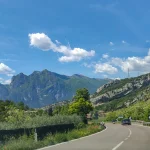A rental car is the ideal way to discover Italy in a flexible and independent manner. Whether it’s picturesque coastal roads in Sardinia, small villages in Tuscany, ancient temples in Campania, or medieval cities in the paradisiacal mountainous regions of the Apennines – with a car, travelers enjoy maximum freedom. At the same time, there are special rules, costs, and tips in Italy that vacationers should know in advance. This guide summarizes the most important information about car rental in Italy.
Booking a Rental Car – What to Look Out For?
- Book in advance: Especially during the high season, rental cars are quickly booked up. Early bookers often save money.
- Use comparison portals: The prices and services of different providers vary widely. Bookings through comparison portals are generally significantly cheaper than on-site bookings.
- Our tip: Be sure to check the provider’s general terms and conditions regarding the credit cards accepted and the required deposit.
- Choose the pick-up location: Directly at the airport is convenient and usually cheaper. Rental stations in the city are often more expensive.
Age Restrictions and Driver’s License
- Minimum age: Usually 21 years old, with some providers also 23 or 25 years old.
- Young driver fee: Many rental companies require a surcharge for drivers under 25.
- Driver’s License: The national EU driver’s license is accepted. For non-EU citizens, an international driver’s license is required.
Insurance for Rental Cars in Italy
- Third-Party Liability (TPL): Is legally mandatory, but often only with a low coverage limit.
- Collision Damage Waiver (CDW): Highly recommended, as it covers damage to the rental car.
- Theft Protection: Useful, as car theft and break-ins can occur.
- Additional Protection: Protection for glass, tires, and undercarriage offers additional safety. Our tip: The full insurance (Kasko/CDW) offered by comparison portals is usually significantly cheaper than the insurance offered by rental car companies on site.
Costs and Deposit (Security)
- Pricing: Depends on the season, vehicle class, and insurance package.
- Deposit (Security): Is normally blocked on the credit card. Without a credit card, rental is almost never possible.
- Additional charges: For child seats, navigation system, or additional drivers, most providers charge extra costs.
Deposit and Payment Methods for Car Rental in Italy
Deposit Amount
- Depending on the provider, vehicle class, and insurance package, between €500 and €1,500.
- Often significantly higher for SUVs or premium vehicles.
Credit Card – Requirements
- Almost always required: a real credit card (Visa, Mastercard, Amex) in the name of the main driver.
- Validity: The card must be valid for the rental period and often 6 months after the return.
- Limit: A sufficient credit limit is necessary to block the deposit.
Debit Card – Restrictions
- Many rental companies do not accept debit cards or only with expensive additional insurance.
- Reason: Debit cards immediately deduct the available amounts on the card and do not grant credit for future debits such as fines and fees.
- Anyone who only owns a debit card should inquire with the rental company beforehand or apply for a credit card.
Tips
- Check your credit card limit before the trip, to ensure sufficient coverage for the rental and the deposit.
- The card must always be issued in the name of the main driver.
- A second credit card as a reserve can be useful.
Traffic Rules
- Maximum speed: Autostrada (Motorway) 130 km/h, Superstrada (Expressway) 110 km/h, extra-urban roads 90 km/h, urban areas 50 km/h (deviations are possible).
- Toll (Maut): A toll fee is due on most motorways.
- ZTL Zones: In many cities, there are restricted traffic zones (Zona a Traffico Limitato). Violations result in high fines.
- Blood alcohol limit: 0.5 ‰, for novice drivers (less than 3 years of holding a license) 0.0 ‰.
Practical Driving Tips
- Check the fuel policy: Full/Full is the fairest – return the car with a full tank.
- Navigation System: A personal GPS or smartphone app is ideal for avoiding toll booths and ZTLs.
- Parking: White lines = free, blue lines = paid, yellow lines = forbidden.
- Accident or Breakdown: Immediately inform the police (112) and the rental company.
Conclusion
A rental car is an excellent opportunity to get to know Italy by car away from the main tourist routes. With the right insurance, a look at the traffic rules, and a little planning, the vacation can be flexible and relaxed. Anyone who takes into account the peculiarities like tolls and ZTL zones drives safely and without unpleasant surprises.

ZTL Italy · Driving Bans in Rome, Florence, Bologna & Milan
If you travel through Italy by car, you will quickly encounter the so-called ZTL zones (Zona a Traffico Limitato). These…>>>

Tolls, Telepass, and Safety: Understanding Italian Highways in 2025
For many travelers, tolls in Italy are an important topic because almost all highways require a fee. Knowing how the…>>>

Driving in Italy – Rules, Tips & What Visitors Need to Know
Italy is a wonderful country to explore by car. From the Alps to the Adriatic coast and through picturesque old…>>>
